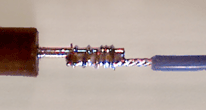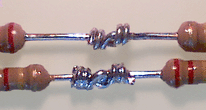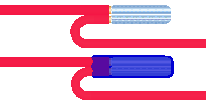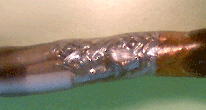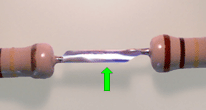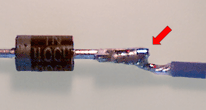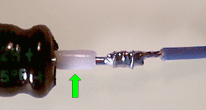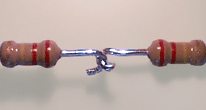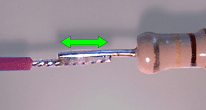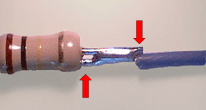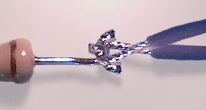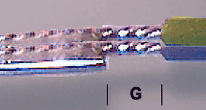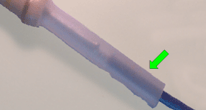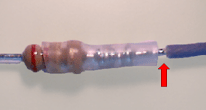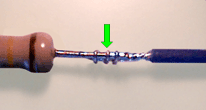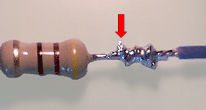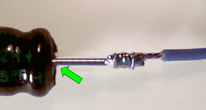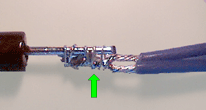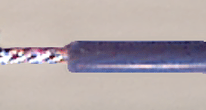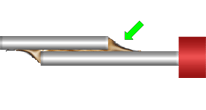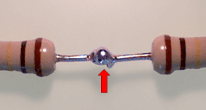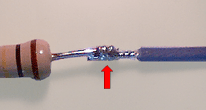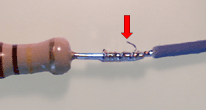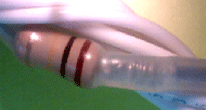SERVICE LEAD SPLICES
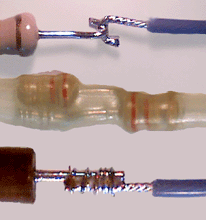
Design applications may require the termination of a discrete leaded component in a non-standard configuration, where the components are not terminated in the manner originally designed for the package type, the component's leads are being used as terminals, and/or where the termination method is not addressed in the NASA standards.
These terminations impose stress relief requirements on the solder joint and the component lead seals that must be addressed to ensure reliable operation.
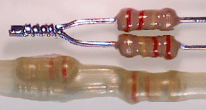
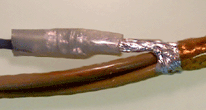
PREFERRED
END SPLICE
The end splice is a version of the lash splice, where the conductor ends are laid side by side, wrapped, soldered, and then insulated with shrink tubing. For inline configurations, the splice section may be bent back against the larger conductor(s) and sleeved for strain-relief.
PREFERRED
GROUND LEAD/DRAIN WIRE SPLICE
The lash splice can be used to attach a ground lead/drain wire to a shielded cable in instances where a solder sleeve is impractical or too bulky.
Assembly rating: Easy/Moderate
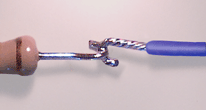
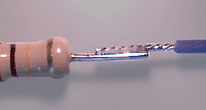
PREFERRED
HOOK SPLICE
This splice is typically used to terminate discrete, leaded components in "daisy-chain" configurations. The termination has good tensile properties, but is prone to solder joint fatigue if repeatedly flexed.
Assembly rating: Easy
PREFERRED
LAP SPLICE
A lap splice is a non-structural splice, where the component lead end and the conductor end are soldered in parallel, overlapping contact to each other. The splice may be simple or complex, and is more compact than a solder sleeve.
Assembly rating: Easy

